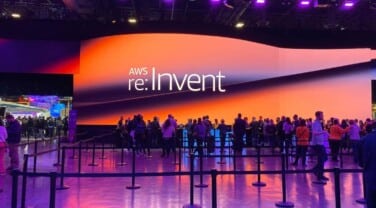Remember when everyone was building Simple Object Access Protocal (SOAP) – based service-oriented architectures, and then Representational State Transfer (REST) – came along and changed everything? We’re at a similar inflection point with AI integration.
We’ve Been Here Before
Fifteen years ago, technology leaders faced a choice: stick with the complex, heavyweight SOAP protocols or embrace the simpler, more scalable REST approach. The organizations that thrived weren’t necessarily the ones with the biggest budgets or the most advanced SOAP implementations – they were the ones that understood what it really meant to integrate systems using APIs.
Today, we’re facing a remarkably similar moment with AI integration protocols.
The New Integration Reality
When Anthropic announced their Model Context Protocol (MCP), it wasn’t just another technical specification – it was a signal that AI integration has moved from experimental to essential. Just as REST democratized API design, protocols like MCP are standardizing how AI agents communicate.
But here’s where it gets interesting: every enterprise system is racing to embed AI capabilities. Salesforce has Agentforce, SAP is building AI into their core modules, and your HR, finance, and operations systems are all developing their own agents.
Sound familiar? It’s the same sprawl we saw with early API implementations.
Navigating The AI Wild West Without It Becoming a Spaghetti Western
Traditional integration was “plumbing” – moving data from point A to point B. AI integration is orchestrating intelligence across systems that now have their own decision-making capabilities.
This creates a perfect storm of complexity. Some of your enterprise systems will have robust AI and agentic capabilities, while others won’t have any at all – leaving you to figure out where intelligence should live. Best practices are still being formed, and there are as many opinions on “good AI architecture” as there are vendors selling solutions. Companies find themselves in the Wild West without an established set of rules.
Without proper orchestration, you quickly end up with a spaghetti-type architecture – with point-to-point AI integrations that become a tangled mess. For example, consider a simple employee onboarding process: your Human Resources Information System (HRIS) system has an AI agent that knows employment data, your knowledge management system has an agent that understands company policies, and your IT system has an agent managing access rights.
When a new hire asks, “How do I request time off, and what’s our vacation policy?” Which agent answers? How do they coordinate? Who’s orchestrating this distributed intelligence?
Beyond Platform Wars
The winning strategy isn’t picking the “best” AI platform – it’s building an architecture that lets each system do what it does best while orchestrating intelligently across them.
According to Gartner, 40% of enterprise applications will feature task-specific AI agents by 2026, up from less than 5% in 2025, with 33% of enterprise software applications including agentic AI by 2028.¹ The question isn’t whether this will happen, but whether you’ll be ready to orchestrate it effectively.
The organizations that succeeded in the REST transition weren’t those that built the prettiest APIs – they were those that thought systematically about integration architecture. Today’s AI integration leaders are thinking beyond individual agents to the protocols and orchestration layers that connect them.
The Orchestration Challenge
Just as REST required rethinking your service boundaries, AI integration protocols require rethinking your intelligence boundaries.
Where does each agent’s expertise begin and end? How do they hand off complex requests? What happens when business logic spans multiple AI-enabled systems?
These aren’t just technical questions – they’re strategic ones that require understanding both your current architecture and where intelligence naturally flows in your business processes.
From Chaos To Orchestration
At Allata, we’ve seen this pattern before, and we’ve built solutions to address it. Our AI Accelerator Framework provides the orchestration layer that enterprises need to coordinate multiple AI agents across different systems. Rather than forcing you to pick sides in the platform wars, it enables each system to do what it does best while providing centralized intelligence orchestration.
We’ve deployed this approach with healthcare organizations managing HIPAA-compliant AI across multiple systems, with manufacturing companies orchestrating agents across product data and market intelligence, and internally, where it’s increased our team productivity by up to 50% while maintaining consistent AI governance.
The framework includes specialized AI personas, agentic workflows, and industry-standard integration using protocols like MCP – essentially providing the “directory of agents” that technology leaders need to manage their growing AI ecosystem.
The parallels to REST’s early adoption are striking, but this time we have the benefit of hindsight and proven orchestration frameworks to guide the transition. Organizations facing similar AI integration challenges can benefit from developing an orchestration strategy that scales with business growth rather than creating new bottlenecks.
Contact us to explore how strategic AI architecture can transform these challenges into competitive advantages.
Sources
1 Gartner (2024). “Gartner Predicts 40% of Enterprise Apps Will Feature Task-Specific AI Agents by 2026, Up from Less Than 5% in 2025.” Available at: https://www.gartner.com/en/newsroom/press-releases/2025-08-26-gartner-predicts-40-percent-of-enterprise-apps-will-feature-task-specific-ai-agents-by-2026-up-from-less-than-5-percent-in-2025



